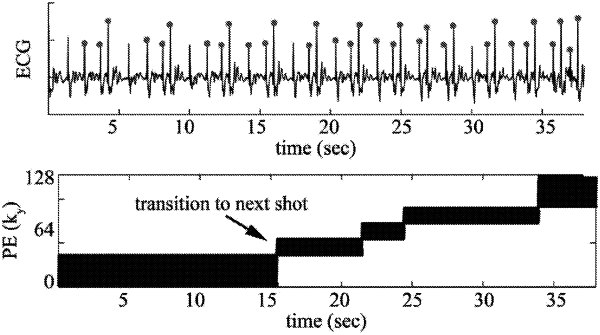| CPC A61B 5/7289 (2013.01) [A61B 5/0044 (2013.01); A61B 5/055 (2013.01); A61B 5/33 (2021.01); G01R 33/5673 (2013.01); A61B 2576/023 (2013.01); G01R 33/4824 (2013.01); G01R 33/56325 (2013.01)] | 20 Claims |

|
1. A method of making a Magnetic Resonance Imaging (MRI) image of a body part that undergoes at least quasi-periodic motion, the method comprising:
obtaining first physiologic data of the body part via a physiological sensor as the body part undergoes the at least quasi-periodic motion;
scanning the body part using first MRI hardware-controllable settings to produce first MRI data, wherein scanning the body part using the first MRI hardware-controllable settings is performed contemporaneous with obtaining the first physiologic data of the body part;
obtaining second physiologic data of the body part as the body part undergoes the at least quasi-periodic motion;
comparing the second physiologic data to the first physiologic data, independent of the first MRI data, to determine at least one instance in which the first physiologic data of the body part obtained during the at least quasi-periodic motion corresponds to the second physiologic data;
determining second MM hardware-controllable settings based on the first MRI hardware-controllable settings used during the at least one instance;
scanning the body part with the second MRI hardware-controllable settings to produce second MRI data; and
producing the MRI image using the second MRI data.
|